How to Structure a Real Estate Team
Teams in Real Estate are where it’s at. The dominance and growth from real estate teams relative to independent agents has been undeniable. We cover the benefits extensively in our Real Estate Teams post.

However there are infinite ways to organize a real estate team. But there are a handful of structures that are proven to be successful in the industry.
- What are the different real estate team structures to consider?
- Mentor Structure
- The Small Team
- The Medium Sized Team
- Team Leader Structure
- Hybrid Team Structure
- The Large Team
- Team Structure Progression
What are the different real estate team structures?
| Team Structure | Number of Team Members | Split between Team and Agent | Avg. Annual Transactions | Member Retention | Inside Sales Required | Team Overhead Cost |
|---|---|---|---|---|---|---|
| The Mentor Structure | 2-8 agents | Suggested 10/90 | dependent on mentees | Intentionally low | No | Low |
| Small Team | 2-4 buyer agents 1-2 support staff | Around 50/50 | 60-75 | Moderate to high | No initially, may grow | Starts low |
| Medium Team | 3-5 buyer/showing agents 1-2 listing agents 2-3 support staff | Around 50/50 | 150-200 | High | No | High |
| Team Leader Structure | 2-4 buyer/showing agents 1 listing agent 3 support staff 1-2 ISAs | Around 50/50 | 150-200 | High | Yes | High |
| Hybrid Team Structure | 4-5 buyer/showing agents 1 lead/listing agent 3 support staff | Around 50/50 | 150-200 | High | Depends | Medium |
| The Large Team | 4-8 buyer/showing agents 2-3 listing agents 3-4 support staff 3-4 ISAs | Around 50/50 | 225+ | High | Yes | High |
The Mentor Structure
The mentor structure is as lightweight as a team gets. The mentor structure involves an experienced lead agent acting as a mentor to less-experienced agents. This model creates a nurturing environment for junior agents to grow under the guidance of a mentor.
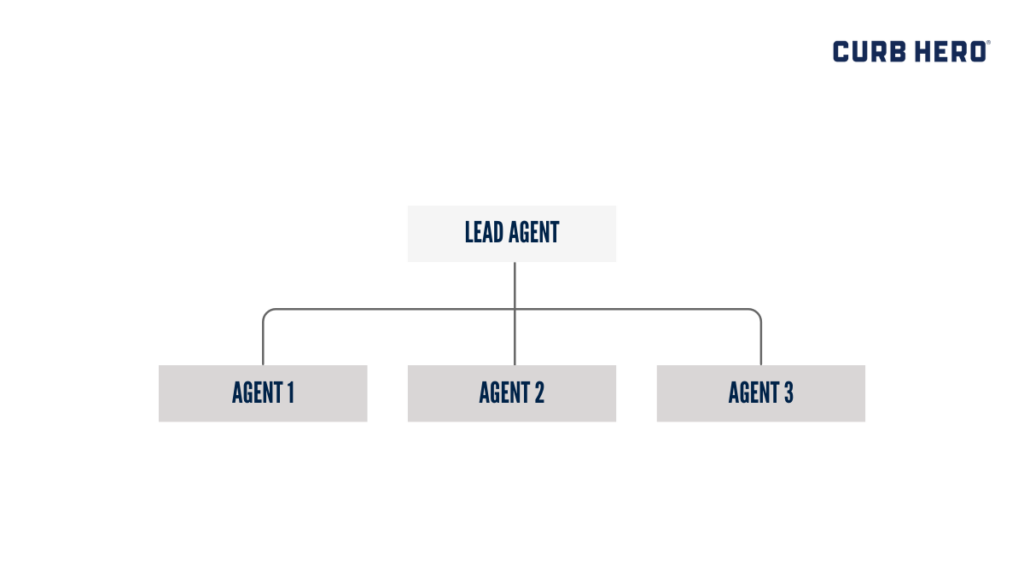
The mentor agent is primarily providing guidance which could mean
- Provide high level advice and strategies
- Troubleshooting challenging situations
- Providing sales scripts and other processes
- Offering watch and learn opportunities with the veteran agent (letting agents ride-along on client meetings)
- Co-listing with junior agents to help junior agents win business
Note that in this structure, providing leads, software, and administrative staff is not part of the arrangement…which minimizes overhead on the mentor agent. Each agent is responsible for their individual business activities and outcomes.
In most cases it’s not even a real “team” because the mentees don’t explicitly collaborate.
Traditional Small Sized Team
The Small Sized Team, or as some like to refer to it, the “core structure”, is often the first stepping stone for agents intentionally looking to build a team around them. The small team structure is centered around the team leader, who acts as both an individual producer and manager, guiding operations and sales. This structure is an ideal starting point because it’s fairly scalable up to 4 agents without needing to add much more overhead. And as we’ll get into below, the small team can scale much further by adding some administrative personnel.
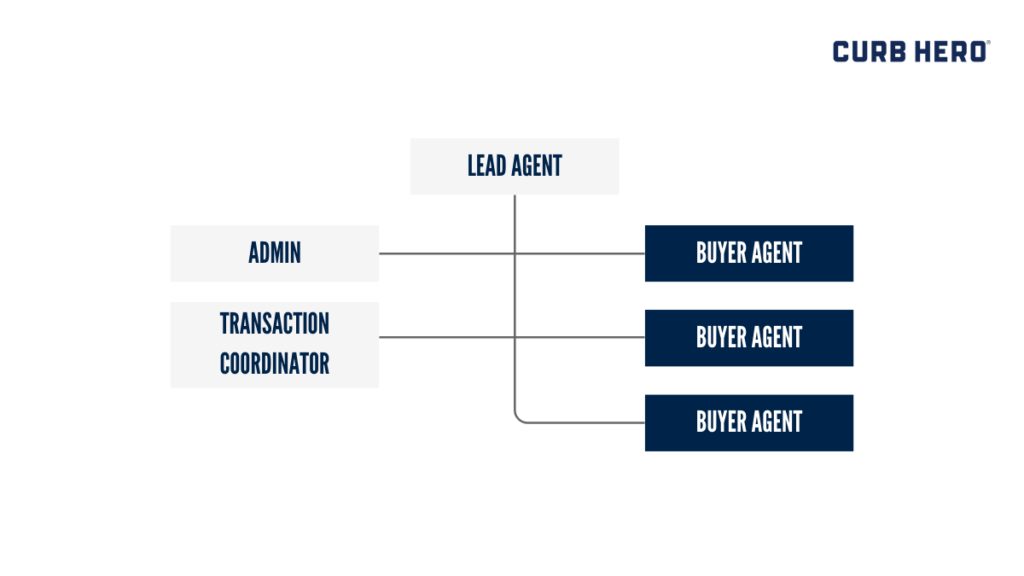
The small team is a great transition for a successful independent “army-of-one” agent to be a team lead that contributes a large part of the transactions while also overseeing a broader team.
Plus team growth is intuitive when starting with this structure. It allows for steady expansion based on business demand. And when the team is at capacity, they can graduate to the medium sized team structure mentioned below.
Traditional Medium Sized Team
Moving towards a larger scale of operations in real estate calls for more structural layers include support staff, process (SOPs), and other forms of overhead. The difference between a small vs medium sized team is where these differences in overhead are clearest.
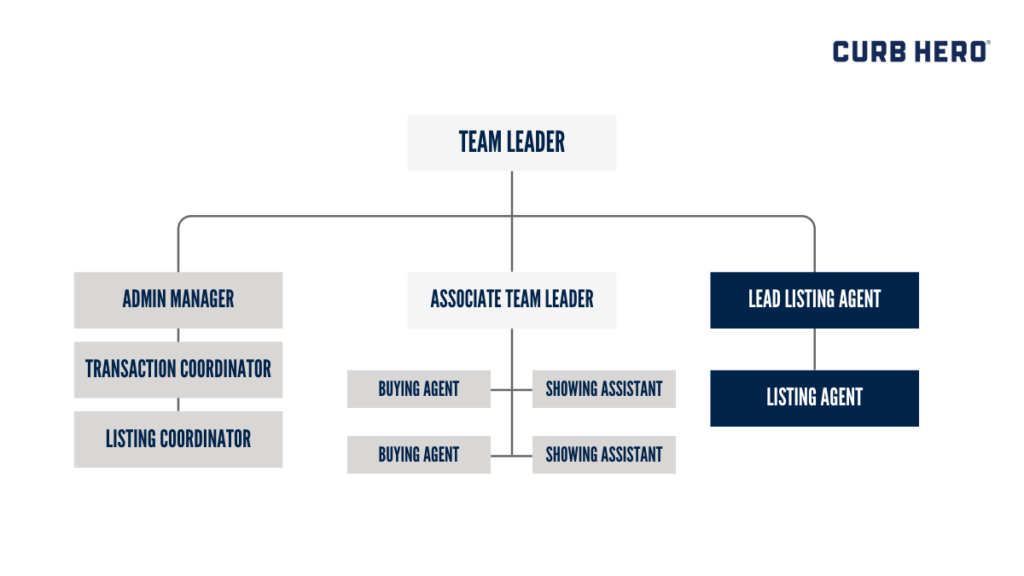
One of the unique features of this structure is the division of the team into listing and buyer agents, which means the team lead isn’t necessarily the primary listing agent. There are also showing assistants, and other support staff members which let the agents focus on prospecting and closing deals.
Team Leader Structure
One of the most common ways to structure a real estate team is the Team Leader model. Its distinguishing feature is an inside sales team assigned with the crucial task of lead generation and qualification. This structure is ideal for teams that require a dedicated group to focus solely on generating new business, ensuring a steady stream of probable clients for the agents to tap into.
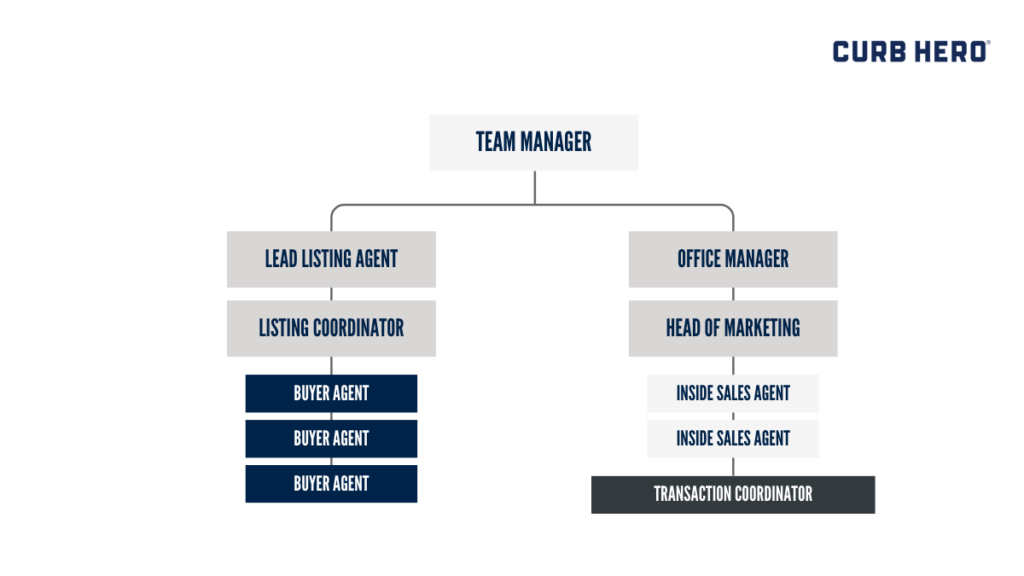
In this system, agents are typically responsible for handling their own administrative tasks and paperwork. This independent handling of back-end tasks not only promotes self-management among agents but also conveniently cuts out additional hiring costs. However, this arrangement necessitates that the agents possess a certain degree of organizational and management skills to keep their personal business matters in order.

Key features to remember when considering this structure include: dedicated lead generation, individual agent’s self-management, and cost-effective operations. Understanding how to structure a real estate team with these features can increase productivity and foster a sense of individual responsibility. In the grand architecture of a successful real estate enterprise, these blocks hold great potential for building a sturdy foundation.
Hybrid Team Structure
The hybrid team structure in real estate, which combines the roles of both buying and listing agents in one cohesive team, is a principle that has been gaining considerable traction.
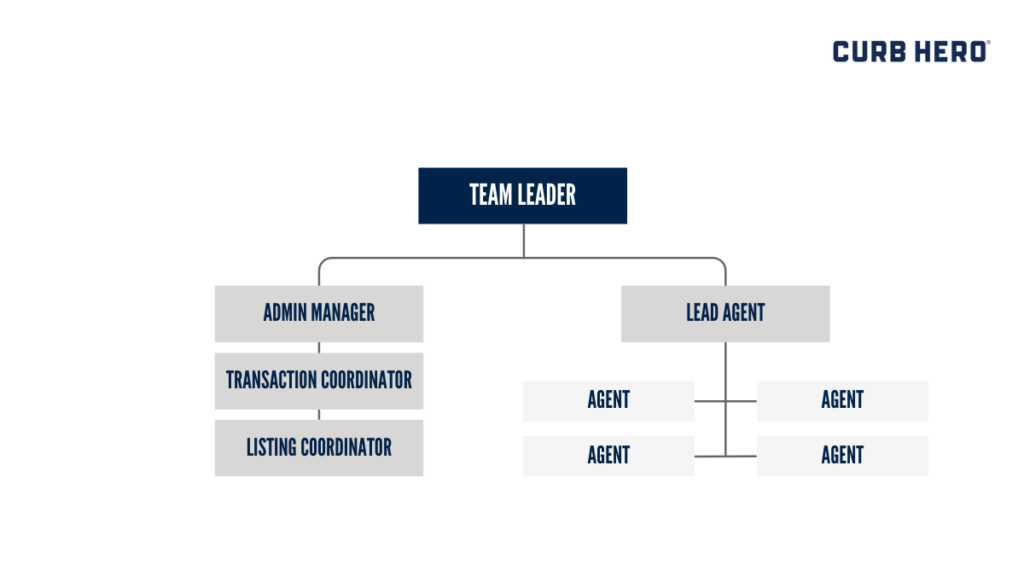
To effectively manage how to structure a real estate team in a hybrid model, you need to master lead distribution. Leads are the lifeblood of any real estate operation, and their fair and efficient allocation can be a make-or-break issue. The ideal scenario is one where lead distribution ensures that all team members are busy and profitable but not overwhelmed. Therefore, it’s vital that the central hub – or the team leader – has a clear strategy for allocating leads.
The key concepts mentioned in the hybrid team structure include – versatility in roles, careful lead management, clear delineation of responsibilities, and a central figure (team leader) ensuring fair lead distribution. Remembering these points when configuring how to structure a real estate team can help in crafting a well-balanced, efficient, and revenue-generating entity.
Traditional Large Team
Now the Large Team structure. This is where the team structure looks more like an org chart of a small corporation. Catering to more extensive operations, this model optimizes roles and responsibilities. At this stage of team evolution, it’d be rare if the team lead was still handling individual clients.
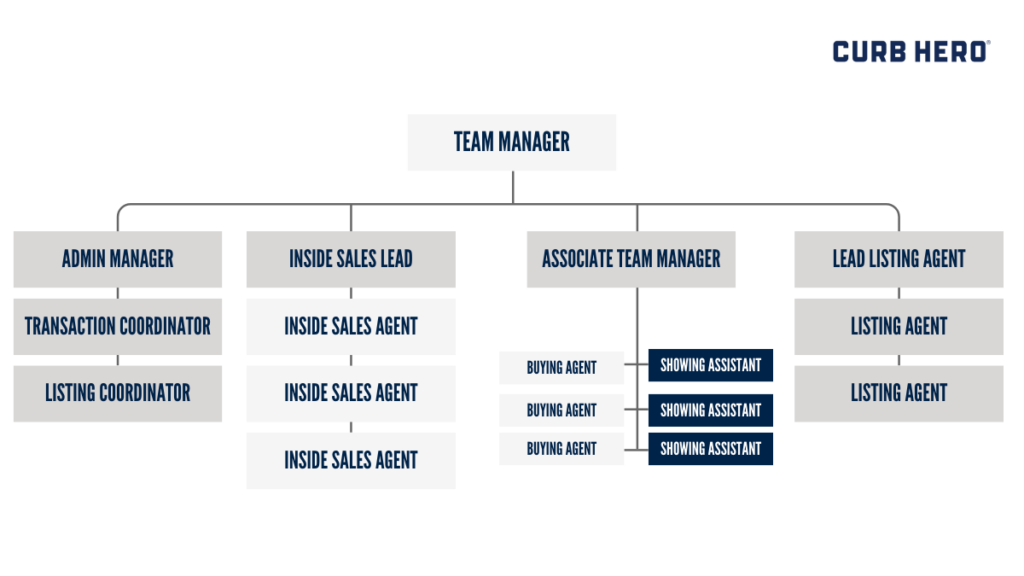
One of the key elements of the Traditional Large Team approach is the presence of a dedicated inside sales team. These teams focus solely on nurturing leads and setting up appointments, therefore, freeing up agents to concentrate on closing clients.
In essence, the Traditional Large Team is a carefully-stitched quilt of responsibilities including – lead generation, client service, negotiation expertise, and transaction coordination.
Team Structure Progression
Here’s a great video by Ben Kinney which walks through building a team out from just being an independent agent to having an entire organization.
This video is over an hour long so here are some of the key areas.
Team structure evolves as the team’s production grows. Here’s the roadmap that is shared in the video.
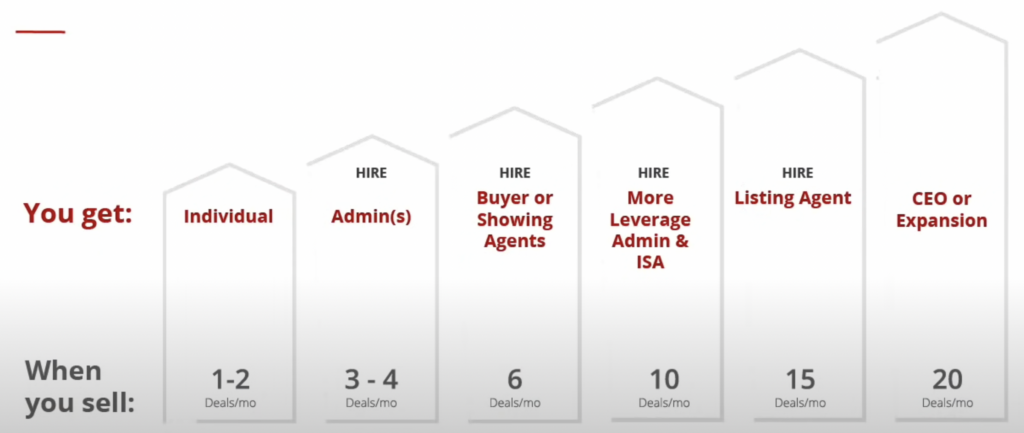
Also compensation varies for different team members. Above we primarily covered agent compensation but there’s more team members that need to get paid…so here’s a comp reference from the video.

Exploring diverse real estate team structures is crucial for maximizing efficiency and growth. From mentorship to establishing a mega team, each has unique benefits and challenges.
Knowing which structure works best for your current business and then plotting a course to your long term vision is the best way to achieve your goals AND to navigate whatever market conditions throw your way.
And keep in mind, that why selecting your ideal team structure is the initial step, understanding how to implement the structures is where the real contest lies.



